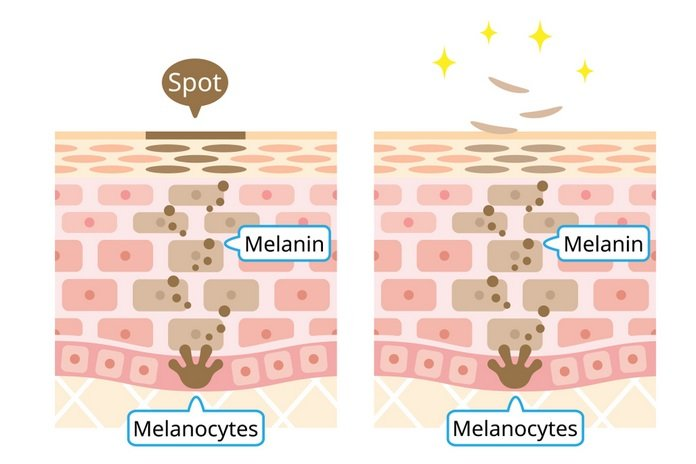How does vitiligo occur?

Vitiligo can develop due to a deficiency of the pigment melanin in the epidermis. Melanin is the pigment that gives your skin its color, which is produced by skin cells known as melanocytes. In the case of vitiligo, however, there are insufficient functioning melanocytes to provide sufficient melanin to the epidermis. Consequently, it causes white patches on the epidermis and hair loss. Vitiligo affects individuals of all races and skin tones equally. Approximately half of vitiligo sufferers are male, while the other half are female.
People can develop vitiligo at any age, but nearly half of vitiligo patients are diagnosed in infancy or before the age of 20. Initial vitiligo symptoms include the appearance of white patches on the skin, which can extend to any part of the body, including the buttocks, face, arms, hands, and genitalia. It is not yet known precisely why melanocytes disappear from vitiligo-affected skin areas. Non-segmental vitiligo is the most prevalent form of vitiligo that manifests as an autoimmune disorder.
In individuals with auto-immune conditions, the immune system does not function normally. The immune system has a tendency to assault the body’s healthy tissues and cells, rather than foreign invaders like viruses. If a person develops non-segmental vitiligo, their immune system eliminates the melanocyte skin cells responsible for the production of melanin pigment. Vitiligo has a close relationship with other auto-immune disorders, such as hyperthyroidism, a disease characterized by an overactive thyroid function. However, not all vitiligo patients develop auto-immune disorders.
You may be more likely to develop nonsegmental vitiligo if:
Additional members of your family are affected by vitiligo.
There is a family history of certain auto-immune conditions, for example, if one of your parents has the stomach-affecting auto-immune condition pernicious anemia.
You have melanoma, a form of skin cancer, or non-Hodgkin lymphoma, a cancer of the lymphatic system.
You suffer from any other autoimmune disorder.
You have gene variations that are commonly linked to nonsegmental vitiligo.
Segmental vitiligo, a less common form of vitiligo, appears to be caused by neurochemicals, which are compounds released by nerve endings in the skin. The melanocyte skin cells are harmed by these substances. There is a chance that vitiligo could be aggravated or triggered by certain events, including:
Damage to the skin, such as wounds or severe sunburn
Among women, stressful events including labor
Exposure to specific compounds, such as working at a radioactive site, can cause cancer.
Vitiligo is not caused by an infection, and the condition cannot be transmitted from one individual to another. Many individuals develop vitiligo in their twenties, but it can manifest at any age. The skin condition affects both sexes and all ethnicities equally. However, it is more noticeable in individuals with darker skin tones. People with certain auto-immune diseases, such as hyperthyroidism, are more likely to develop vitiligo than those without any auto-immune condition. (7)
